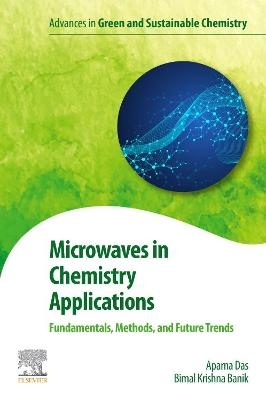
Microwaves in Chemistry Applications
Elsevier Science Publishing Co Inc (Verlag)
978-0-12-822895-1 (ISBN)
Beginning with an introduction to microwave chemistry, Part One discusses foundational principles, equipment and approaches for modeling reactions and assessing the outputs of those models. Methods in microwave chemistry are then the focus of Part Two, with microwave-assisted synthesis, catalysis, reduction and reactions all explored in detail. Part Three reflects on the practical usage of these methods to address specific issues, covering a number of interesting applications.
Aparna Das obtained her PhD degree in Material science/nanophysics from Joseph Fourier University based upon the work on “Semiconductor Quantum Dots for Opto-chemical Sensor Application at French Alternative Energies and Atomic Energy Commission (CEA), France. Her postdoctoral experiences include working as a research scientist at the California Nano Systems Institute and Electric Engineering Department, University of California, Los Angeles (UCLA), USA, and as an experienced researcher at the Nanowiring-Marie Curie Initial Training Network, Georg August Universität Göttingen, Germany. Dr Das’s research interests include Computer-assisted Physico-chemical methods, quantum mechanical calculations, interdisciplinary science (Biology, Chemistry, and Physics) for drug development, computer-aided drug design, microwave applications, photochemical reactions, III-Nitride based chemical sensors, solar cells, optoelectronic devices, synthesis of thin layers and nanostructures including Quantum wells, quantum dots, and nanowires. She is the author of two books and received the young women researcher award, European microscopy society (EMS) outstanding paper awards, and several international fellowships such as the Marie-Curie fellowship, CEA-CNRS research fellowship, and Brain Korea 21 fellowship. Bimal Krishna Banik is a full professor of the Deanship of Research Development at the Prince Mohammad Bin Fahd University in the Kingdom of Saudi Arabia. He was a tenured full professor and first president’s endowed professor at the University of Texas for many years. He also served as the vice president of the Research & Education Development of the Community Health System of Texas. Professor Banik was awarded $7.25 million in grants from the US NIH and US NCI. Importantly, he published more than 600 peer-reviewed papers and 500 presentation abstracts. Notably, he authored and edited 20 books published by Springer, Springer Nature, Nova, Elsevier, De Gruyter, and CRC. He mentored approximately 300 students, 20 postdoctoral fellows, and 7 PhD research scientists. He advised 28 university faculties and 2 students’ organizations that have 1400 students. He chaired 20 symposiums at the American Chemical Society National Meetings and 1 conference at the Nobel Prize Celebration. He served as the editor of 12 journals. He received more than two dozens of national and international awards for teaching, mentoring, advising, public service, overall recognitions, and research.
1. Foundational principles of microwave chemistry
2. Microwave equipment for chemistry
3. Modelling and interpreting microwave effects
4. Microwave-assisted synthesis of oxygen and sulphur heterocycles
5. Microwave-assisted synthesis of nitrogen heterocycles
6. Microwave-Assisted Oxidation and Reduction Reactions
7. Microwave-Assisted Enzymatic Reactions
8. Microwave-Assisted Sterilization
9. Microwave-enhanced CVD processes for diamond synthesis
10. Future trends in microwave chemistry and biology
| Erscheinungsdatum | 21.05.2021 |
|---|---|
| Reihe/Serie | Advances in Green and Sustainable Chemistry |
| Zusatzinfo | Approx. 100 illustrations; Illustrations |
| Sprache | englisch |
| Maße | 152 x 229 mm |
| Gewicht | 680 g |
| Themenwelt | Naturwissenschaften ► Chemie ► Physikalische Chemie |
| ISBN-10 | 0-12-822895-4 / 0128228954 |
| ISBN-13 | 978-0-12-822895-1 / 9780128228951 |
| Zustand | Neuware |
| Informationen gemäß Produktsicherheitsverordnung (GPSR) | |
| Haben Sie eine Frage zum Produkt? |
aus dem Bereich


